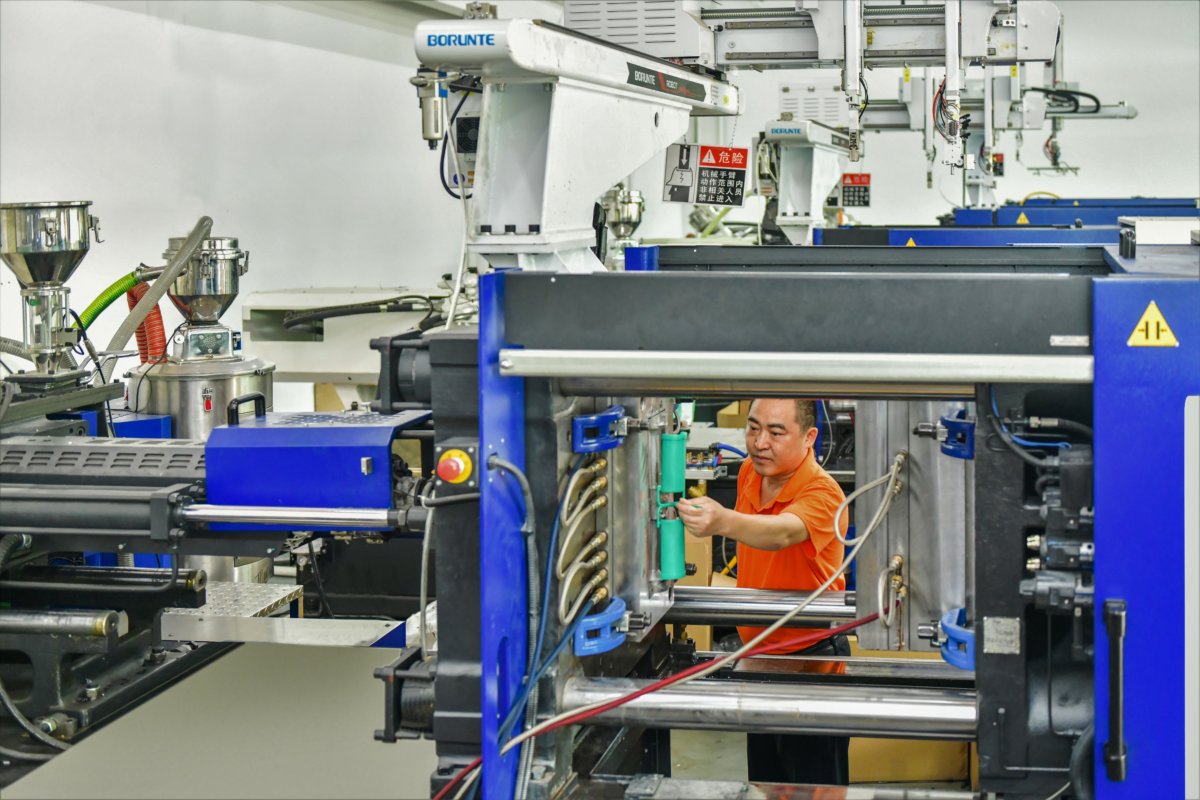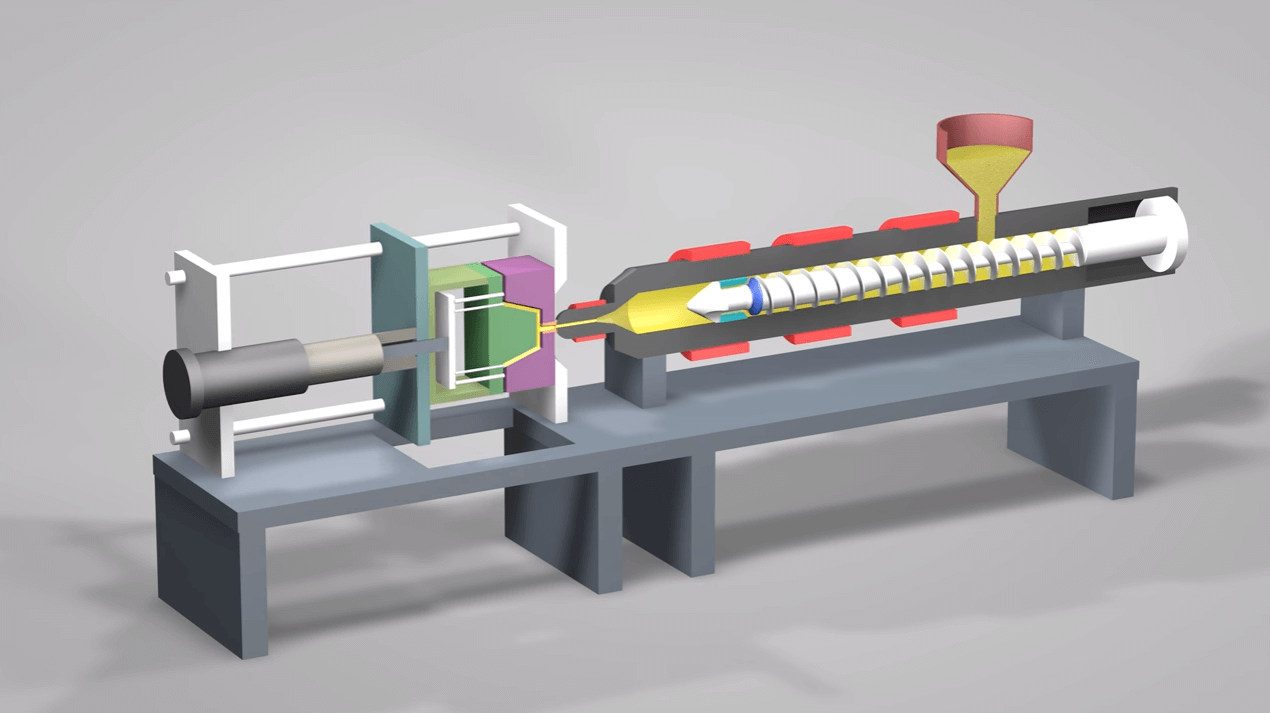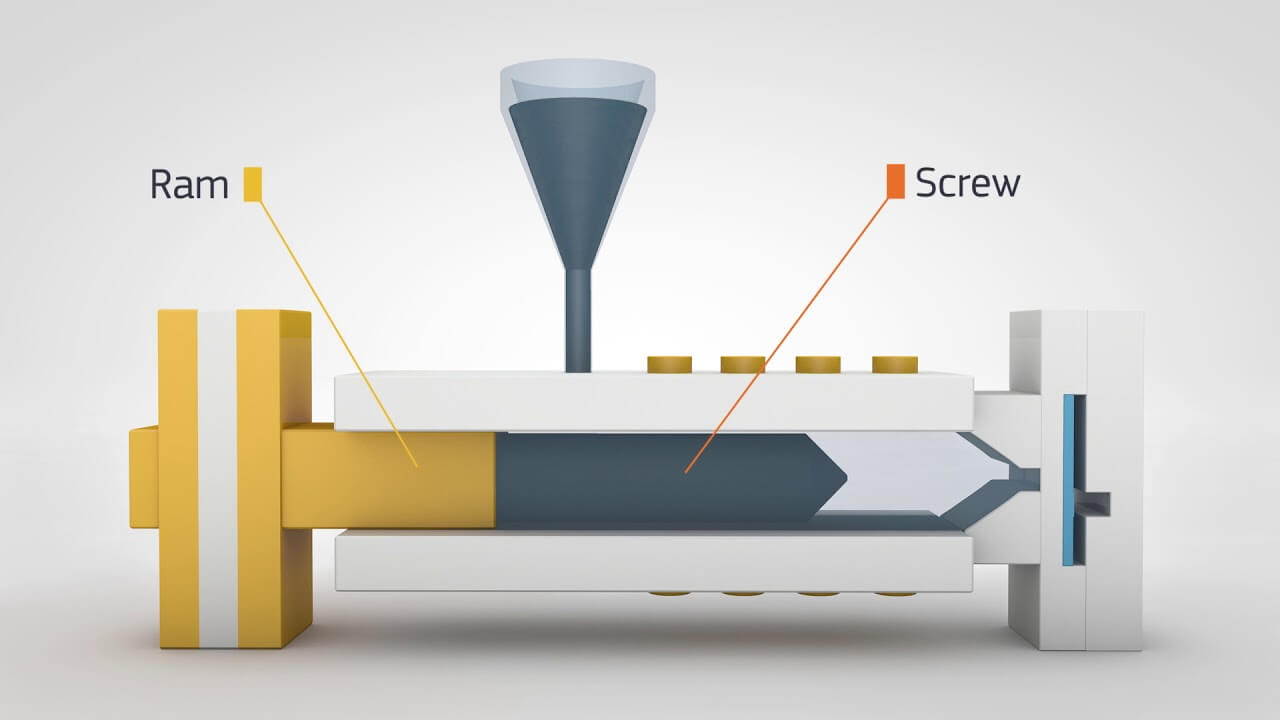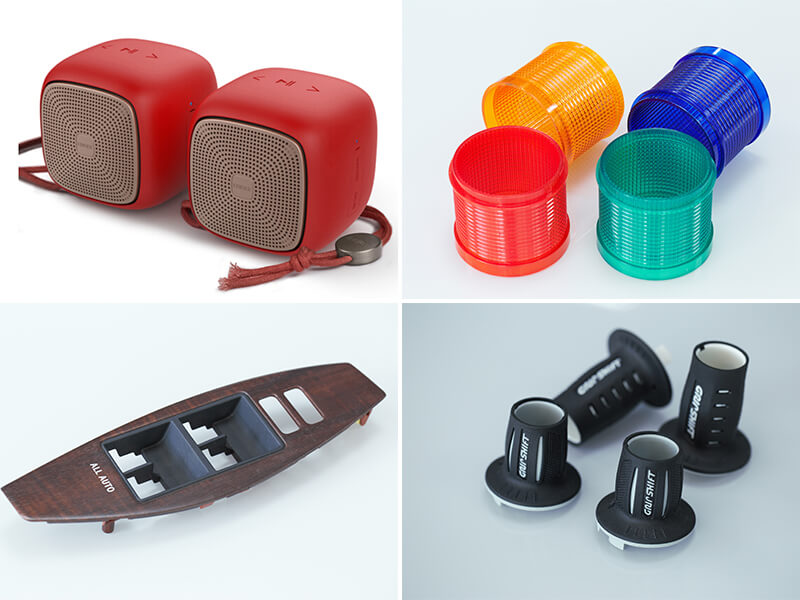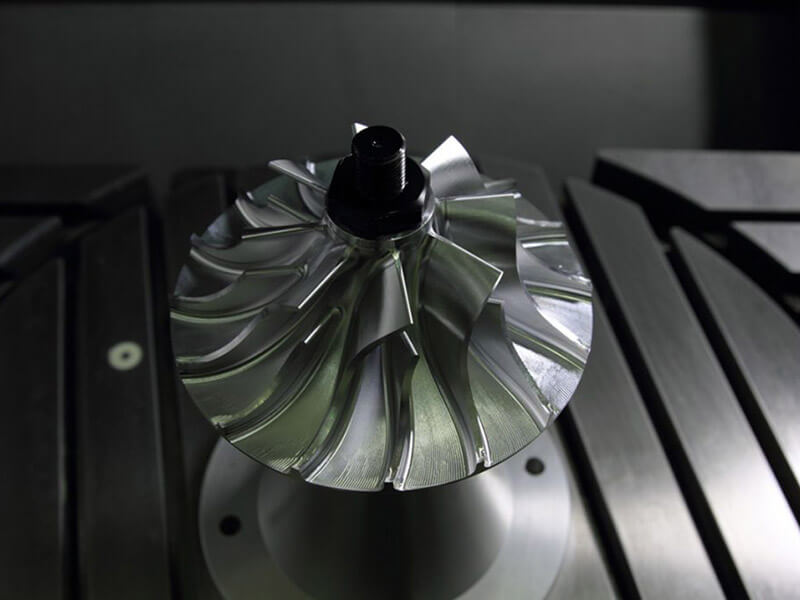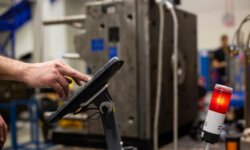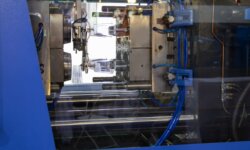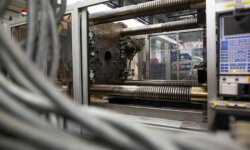Injection molding is the most popular method for manufacturing plastic parts on the planet, so it’s not surprising that the global market for the process was valued at almost 260 million U.S. dollars, with projections for continued growth in the foreseeable future.
The technology is used in a wide variety of industries, including aerospace, medical equipment, and automotive, where advanced techniques such as overmolding and insert molding are used to create even the most complex parts with impeccable precision.
And when you consider just the wide range of injection molding benefits, understanding why millions of companies in some of the most demanding industries in the world are using it for bringing their part designs to life.
But why is injection molding machine manufacturing so effective? And how does it work?
To find out, let’s dig into the subject and answer all of the important questions, including what it is, the process behind it, its main advantages, and how to choose the right service provider.
What is Injection Molding?
Injection molding, а type of molding, is a manufacturing process of using plastic or metals to manufacture a wide range of parts and items. Although injection molding history can be traced back to the 19th century, it still remains one of the best ways to produce complex parts while keeping expenses under control.
The injection molding machine uses custom-made molds to fill them out according to specifications, creating identical copies that can be customized in a variety of ways.
What’s more, as is a very versatile process, injection molding supports a wide range of materials and finishes, which makes it a popular option in countless industries with completely different goals and requirements.
Because of this flexibility, the injection molding machine manufacturing is even used for some of the most demanding manufacturing projects in the world, producing parts in aerospace, medical fields, and the automotive industry.
Whether you’re looking to produce a small number of parts for testing, or need a reliable method for producing large quantities of parts in a hurry, injection molding can be an ideal choice, especially when working with plastics.
What’s more, the unique process when manufacturing part with an injection molding machine also means that you can produce complex parts with intricate designs, which is not something that can be said about all manufacturing options out there.
The ability to manufacture large quantities of parts at an affordable cost also makes it ideally suited for the production of various commodities. In fact, it’s likely that quite a few of the household items that you have could have been produced using injection molding.
How Does Injection Molding Work?
Even though the injection molding process is complicated, it can actually be broken down into a few essential steps that help understand how it works and why it’s so effective.
The injection molding machine is made up of three main components, which are the feed hopper, the screw, and the heated barrel. This machine works by taking plastic powder or granules and manipulating it to shape it into a part according to the requirements and dimensions.
When the feed hopper receives the plastic granules, it then uses frictional action of the screw to create heat. Once the plastic reaches the correct temperature, it is then injected into the mold cavity, where it eventually cools and takes the shape according to the mold design.
If necessary, advanced injection molding techniques such as repeated injection can be used to create parts out of multiple materials. It’s also possible to use insert molding to add plastic parts over existing parts made out of other materials.
The basic principles behind the injection molding process may seem simple, but in reality, it is a very complicated process that requires the right equipment and the right expertise. However, when it is executed correctly, injection molding can consistently produce excellent results even for the most challenging manufacturing projects.
What are main injection molding parameters?
Understanding and controlling key injection molding parameters is essential for ensuring high-quality production.
- Injection pressure is paramount, typically ranging from 500 to 1500 bar, to ensure proper material flow and mold filling.
- Mold temperature significantly impacts part quality, with precise control required to balance flow and cooling.
- Nozzle pressure is crucial for consistent material injection, while mold locking pressure maintains mold integrity against the force of the injected material.
- Recovery rate, determining the speed at which the material is prepared for the next cycle, influences production efficiency.
- Shrinkage rate is another critical factor, affecting the dimensional accuracy of the final product.
- Clamping force ensures the mold remains closed during the process, preventing defects.
- Screw speed affects material homogenization and injection consistency.
What are the Different Injection Molding Types?
Injection molding can be categorized into several types, each with unique characteristics and applications, highlighting the depth and flexibility of the process as a technique.
Thermoplastic injection molding
Thermoplastic injection molding is the most prevalent form of this manufacturing process. It involves melting plastic pellets until they are sufficiently fluid to be injected under pressure into a mold. This type is particularly favored for its reversibility; the plastic can be reheated and reused, which suits a wide range of consumer products including toys, automotive components, and household appliances. Its ability to quickly produce large volumes of parts makes it indispensable in sectors demanding high production throughput alongside consistent quality, such as the automotive and consumer electronics industries.
Thermoset injection molding
Another significant category is thermoset injection molding, which differs from its thermoplastic counterpart due to the chemical nature of the materials used. Thermosetting plastics, once cured by heat, become cross-linked and cannot be melted down again. This irreversibility imparts superior chemical and heat resistance, making thermoset injection molding ideal for producing parts that must withstand harsh environments, such as electrical insulators, high-heat automotive parts, and certain industrial applications.
Silicone injection molding
Silicone injection molding stands out due to its use of liquid silicone rubber, a material known for its flexibility, durability, and temperature resistance. This type of injection molding is crucial in the medical field for creating parts that must be sterile, such as valves, connectors, and various medical instruments. Additionally, its application extends to making soft kitchen goods, like baking molds and spatulas, which benefit from silicone’s heat-resistant and non-stick properties.
Metal injection molding
Metal injection molding (MIM) caters to applications requiring the strength of metal with the intricate detailing achievable through traditional injection molding. In this process, fine metal powders mixed with a binder are injected into a mold. Following molding, the binder is removed, and the part is sintered to achieve full density. MIM is particularly advantageous for producing small, complex metal components like surgical tools, firearm components, and automotive sensors, where precision and durability are paramount.
Rapid injection molding
Rapid injection molding is an important adaptation of traditional injection molding, designed to accelerate the development cycle and reduce the time from concept to production. This technique leverages automated design and quick-turn mold manufacturing to produce injection molded parts within a dramatically shortened timeline, often within days. This method is particularly beneficial for prototyping or small batch production where speed is critical.
In rapid injection molding, the process begins with the creation of high-quality molds using aluminum or other easily machinable materials, which significantly cuts down on the time required to produce the mold. Aluminum, being easier to cut and shape than the more durable steels typically used in conventional molds, allows for faster machining without sacrificing the essential features of the mold. The rapid tooling process not only accelerates production but also offers a cost-effective solution for trial runs, enabling engineers to test designs and functionality without committing to the expense of full-scale production tooling.
Pros & Cons of Injection Molding
Even though injection molding is one of the most effective manufacturing techniques that has many advantages, there are things that need to be considered before deciding whether it’s the right approach for you.
Just as with any manufacturing approach, some advantages and disadvantages can apply to different situations, and only by understanding them can you make an informed decision.
With that in mind, let’s go over some of the most significant pros and cons that injection molding can offer.
Pros
First, let’s go over the advantages of manufacturing with an injection molding machine.
Impeccable Precision
Because of the way that material is injected to and then shaped by the mold, the number of imperfections can be reduced to a minimum. That means that with every run, you can produce a part that is identical to the one preceding it, over and over again.
As you can imagine, this type of precision is important in almost all industries, and especially in those that can’t compromise on quality, which is why injection molding is popular in highly-demanding fields like aerospace and automotive.
Complex Details
As mentioned before, injection molding enables companies to produce even the most complicated mold designs, executing even the smallest of details with ease.
You can add multiple details to your mold design and rest assured that each of them will be made a reality by the mold.
Durability
Unlike most other production methods, injection molding provides advanced possibilities in terms of the durability and reliability of the plastic parts that are produced.
For instance, you can add fillers in the injection molds that are created, which can help reduce the density of the plastic material and make each part stronger.
Automation
One of the primary reasons why injection molding produces consistent results is that a lot of the actual manufacturing process can be automated.
That means that you can not only reduce the chances of human error to a minimum, but also have the machine produce parts at a consistent rate and a high fulfillment rate.
Cost Efficiency
For the most part, injection molding is one of the most cost-effective solutions for producing parts that you can find.
Even though the bottom line of your project will depend on the materials that you use and the complexity of the designs, when comparing it with other manufacturing methods, you will usually find that injection molding will deliver more for the budget that you can allocate.
Wide Range of Materials
If there’s one thing that injection molding really excels at, it’s the ability to customize the materials and finishes according to almost any type of requirements. You can choose plastic, thermoplastic rubber, chemical resistant plastics, biodegradable, and many others, so just be sure to figure out what you need from the part and you’ll have plenty of options.
You can also select almost any color imaginable, and can also choose from a wide variety of finishes, either for aesthetic or functional purposes.
Eco-Friendly
Finally, in a world where being conscious of the environment is more important than ever, injection molding can be useful because it produces almost no waste.
Every bit of material that isn’t used in the mold can be repurposed and used in future projects.
Cons
Now that we’ve looked at why injection molding is so effective, let’s look at some of its shortcomings to provide you a more well-rounded picture.
High Initial Cost
As we mentioned earlier, injection molding can be very cost-effective, especially for bigger production runs, since the cost of one part is relatively low.
However, before you can actually manufacture, you will need to design and create the mold itself, and that can take many hours and a lot of manpower to execute correctly. There are numerous factors that affect the final cost of injection molding.
Still, even though this process can be complex, once it’s done, you can use the mold to produce thousands of parts quickly.
Takes Longer to Get Started
Because of the fact that the mold needs to be designed and created, it’s understandable that this process will take time, and can sometimes take months to complete, depending on how complex your project is.
But even though the project of mold development can take time, once it’s done, the process becomes extremely fast and reliable. And if you know what you’re looking for and have prior experience, you can cut down on the time significantly.
Size Limitations
Although an injection molding machine can produce fairly large parts of up to around 60 cubic inches, if you need something bigger, you might have to choose another manufacturing method such as plastic fabrication.
Still, in most cases, it’s likely that your part will fall well within the parameters, so you should be fine.
What are the Applications of Injection Molding?
When producing parts, precision and cost-effectiveness are two of the most important considerations that most companies are looking for.
That’s why it’s not surprising that a process such as injection molding has become so popular and has been used both for smaller runs, as well as large-scale production of parts with tight tolerances.
We already talked about some of the high-tech industries that benefit from this manufacturing technology, but let’s look at a few more of the common injection molding applications that are very common, to see what types of items you could produce.
Food & Beverage
As we mentioned earlier, injection molding offers companies the ability to produce parts from a wide range of materials. And that’s very important in an industry such as food & beverage because it needs to comply with a wide range of regulations regarding the safety of food containers. With injection molding, you can use BPA-free and non-toxic plastics that are not only safe to come in contact with food but can also withstand temperature changes.
This, combined with the relatively low cost of production, makes injection molding ideal for producing parts such as food containers, beverage caps, filtering components, and much more.
Construction Parts
Another industry that uses injection molding technology is building and construction, where the custom-made and complex plastic parts play a vital role in the process of building houses and structures.
And oftentimes, these parts also have to meet strict requirements in terms of quality and fit.
For instance, when creating plastic parts for windows and doors, the parts must not only come out perfect but must also be durable, and have unique qualities for withstanding environmental factors.
Today, injection molding is even used to produce parts that can replace metal components, providing excellent performance for a much more affordable price.
Medicine
Because of injection molding, medical companies are able to produce vital tools and parts cheaper, which helps make healthcare more accessible to people all over the world.
Many of the integral medical devices such as heart pumps, various monitors, as well as a range of medical instruments all depend on the precision of injection molding, which makes the technology irreplaceable in the field.
What is the difference between injection molding and machining?
Injection molding and machining are two distinct methods of shaping materials.
Injection molding involves heating the materials until they liquefy, and then injecting them into a pre-designed mold. The material cools and solidifies, taking on the mold’s shape.
On the other hand, machining begins with a solid material block that is gradually shaped using sophisticated machinery. This subtractive process carves away the excess material until the desired object is formed.
While injection molding is ideal for mass production due to its repeatability, machining excels in creating complex, precision parts in smaller quantities.
What is the difference between injection molding and 3d printing?
Injection molding and 3D printing are two significant manufacturing methods but they are not the same. We already know how injection molding function.
In contrast, 3D printing uses a digital blueprint to create an object layer by layer in an additive process. Although it may be slower and often pricier per part, 3D printing shines in the production of intricate, customized, or low-volume pieces. Its versatility allows for on-demand manufacturing and design innovation.
How to Choose Injection Molding Services?
Even though injection molding can be incredibly useful in a wide range of industries, in order for any of that to matter, you must choose a reputable and experienced services provider that can take your vision and turn it into reality.
But what are some of the things you should look for?
Well, for one thing, the company that you choose to work with should have the necessary experience of dealing with a range of injection molding projects. As you now understand, the process of designing and creating the mold can be challenging, so you need experienced specialists that can help you overcome any hurdles that you encounter.
In addition to experienced staff, the provider should also have the most cutting-edge injection molding machine technology because that plays a vital role in how precise the parts can be, how quickly they can be produced, and how long will it take to start the manufacturing process.
Finally, you should look for an injection molding services that can handle big projects. When you need to scale up production, you don’t want to have to look for a new provider simply because the company turned out to be incapable of doing larger runs.
With our inhouse facilities and network of trusted manufacturing partners, 3ERP offers a comprehensive injection molding services in low volumes and large volume. Contact us for a free quote.
